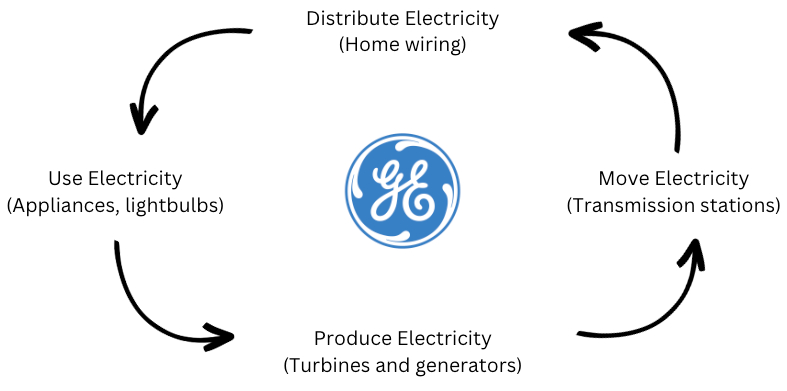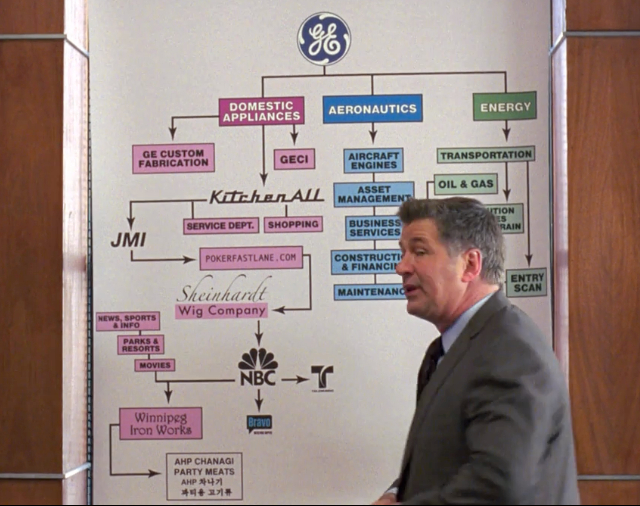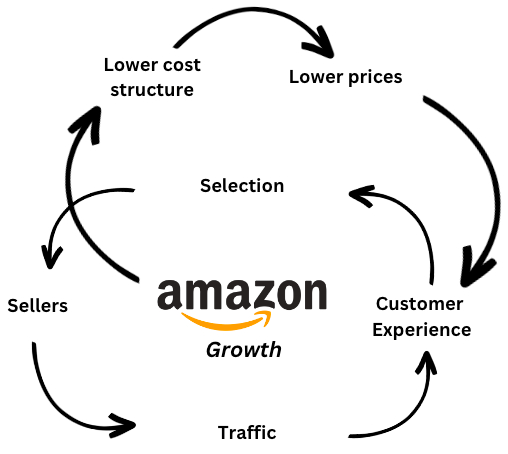
Sponsored By: Bill
This essay is brought to you by Bill. Download their free “Ultimate Guide to Accounts Payable Automation” and learn how you can reduce bill pay time by up to 50%.
For nearly 100 years, there was no more important technology conglomerate than GE. A brief list of its inventions includes: the carbon filament lamp, the central power station, the X-ray machine, the first voice radio broadcast, the electric cooking range, the American jet engine, the first commercial nuclear power plant, the washing machine, man-made diamonds, the toaster oven, and 100 other devices. Its technology has been deployed on the battlefields of World War II, the kitchen of a suburban parent at dinnertime, and the silicon rubber in Neil Armstrong’s astronaut suit. In the nineties it was the most highly valued company in the world. To like the company was to like apple pie, baseball, and red pickups driving through a cornfield. GE was America, and America was GE.
Now, after nearly two decades of underperformance and decay, the conglomerate will be broken up into the only three remaining businesses of value: healthcare, aerospace, and energy. How did it come to this? And perhaps more importantly, when will it happen to the tech giants of today—as it inevitably will. Just as GE felt untouchable in the nineties, so do Apple, Amazon, and other tech giants feel now. But the second law of thermodynamics comes for everyone. Entropy will rear its ugly head, and a new corporate king will be crowned.
This question feels especially poignant with the recent swath of tech layoffs. Announced cuts so far include 12,000 at Alphabet, 10,000 at Microsoft, 18,000 at Amazon, and 11,000 at Meta. This is the most definite sign of weakness from these companies in over a decade. Should investors be concerned?
To determine the answer, we need to study how GE got to where it is today.
The best book to read about GE is Power Failure: The Rise and Fall of an American Icon by William D. Cohan, which was published in late 2022. The book excavates the history of the company in painful, excruciating, exacting, sometimes exuberant, 748 pages of extensively footnoted detail. It is accepted strategy theory that generational companies can be built off of flywheels, as GE did—but what happens when they spin for too long?
Electric flywheel
There are two ways to evaluate GE: as a business with the typical considerations of cash flow, profit margins, and the like, or perhaps more accurately, as a vehicle to enable a couple of old white dudes’ hubris. Let’s start with the first.
General Electric was incorporated on April 15, 1892 in New York City. The company’s creation was a somewhat unhappy marriage between two companies: Edison’s General Electric and the Thomas-Houston Electric Company. Based on the fame and fortune of Edison, you may assume that Edison’s company was swallowing the THEC, but the opposite was true. By the time the merger occurred, Edison had the firm impression of a heel on his backside: GE’s financiers orchestrated it as a way of giving Edison a boot out the backdoor and politely retiring him. How the famous inventor of the lightbulb lost control of his own company to spreadsheet jockeys is instructive to GE's evolutions over the next 100 years. The cycle of invention to money management will inform the rest of this piece.
Automating accounts payable is an easy win for businesses, helping to reduce bill pay time by up to 50%. BILL’s “Ultimate Guide to AP Automation” provides guidance on selecting an AP solution, setting up invoice approval workflows, and increasing security within your payments process. You’ll also learn how to evaluate your current system, remove roadblocks that cost your company time, and engage the right managers within the approvals process. Get the guide to see how AP automation can help streamline your entire payables process, saving you both time and money.
Whenever a new technology paradigm emerges, 99% of people call it crazy and the 1% of weirdos known as founders see it as a business opportunity. Usually any time a scientific discovery occurs or a new market unlocks, a small but ferocious group of entrepreneurs will lock horns and battle for supremacy. Facebook was far from the first social media site (remember Myspace and Friendster?). Apple was far from the first smartphone inventor (remember Blackberry and Nokia?), and Amazon was far from the first e-commerce store (RIP pets.com). These battles are only partially decided by scientific advantage—things like firm culture, business strategy, and execution make up the difference more often than not.
In the case of THEC vs. Edison, the strategy was somewhat similar. They were both fully verticalized electricity companies. They both sold the dynamos, the wiring, and the various endpoints of electricity use—all of the things that made lightbulbs and electric streetcars usable. To grow quickly, they both rapidly acquired or financed smaller operations, introducing a significant need for capital. The merger was instituted so that these two giants would quit battling over the same customers and obtain more economic efficiency. Edison, for all of his inventive prowess, was not known for being a particularly talented operator—THEC was to be given operational control.
This story—of new technology to rapid growth to spreadsheet optimization to financial wonkery—is the defining one of GE. Over and over and over, from the radio, to chemicals, to the air conditioner, GE would do something similar. The company would use its might to buy its way into a new technology market, run with it for a while, and then corporate headquarters would start to fiddle with the numbers.
All of this very interesting coverage takes place in the first 25 pages of the book, which is a shame, as it’s the best part of the story. Cohan spends chapter after chapter discussing the personality flaws of various GE executives that I just couldn’t bring myself to care about. I would've loved more on this early time period.
The strategy theme at the center of the book—and of GE—was a flywheel that the company called the “Benign Circle of Power.” It looked something like this:
GE’s founding in the midst of the Industrial Revolution allowed it to be at the center of the rise of electricity and all of its subsequent use cases. Over and over again, an adjacent application they built to service the flywheel would turn out to be a massive business. Take GE’s move into chemicals. The company needed highly performant electric insulators for its turbines, forcing it to develop the chemicals themselves. Then, begrudgingly, the company moved into the new market and spun up a separate division that went on to do $6.6B in sales in 1998.
Another interesting development of the Benign Circle of Power was how much of the diversification was prompted by the U.S. government. GE would build something and be unable to visualize its value until some government bureaucrat prompted them to reconsider.The jet engine division, one so big and strong that it is one of the three business lines that survives to this day, wasn’t even GE’s idea! The U.S. government asked for GE’s help with converting the turbines it manufactured into superchargers for airplanes.
You can essentially track any weird asset that GE ended up holding to the Benign Circle of Power spinning out of control. A good example is how the company ended up owning NBC (the first time). GE’s scientists had invented the alternator, a key piece of technology for radio transmissions. The company didn’t even want the damn thing—it was actively trying to pawn it off to the British. It would have rather been focused on the manufacturing of the equipment that radio stations would need. However, the U.S. government stepped in and blocked the sale. GE was cajoled into starting the Radio Corporation of America, which was a holding company for GE’s radio-related assets. As part of that, almost as an afterthought, the National Broadcasting Corporation, or NBC, was created.
If you squint your eyes and tilt your head, you can visualize GE as a tracking mechanism of the United States’s technological GDP. As tech took over more of the economy, so too did GE get bigger. As the power cycle kept going faster, more assets cropped up. Eventually we get to the early 1980s, when the company had over 120 businesses, $28B in revenue, $1.6B in profits, $1.5B in cash, and a $12B valuation. Cohan covers this portion of the company's history in the first 157 of the 748 total pages.
The rest of the book is mostly devoted to the exploits of the two subsequent CEOs, Jack Welch and Jeff Immelt. Year by year, the book covers in excruciating detail what happened at the business. Welch took the company to its heights, and Immelt abided over its relatively swift decline. The remaining 591 pages are a case study of these two men and which one is to blame for the fall of GE. Did Welch build a house of cards, or was Immelt the incompetent fool?
And with that, we return to the topic of old white dude hubris.
How did it all fall apart?
At various points, Jack Welch’s physical appearance has been characterized as an energetic gnome, a shrew of a person, diminutive in stature, etc. etc.—all of which are just superfluously verbose ways of saying that he was short. Jack Welch was a 5’7” man who was CEO of GE for 20 years. When he inherited the business, the circle of power was essentially complete. GE had its fingers in nearly every component of the economy.
At this size of organization and at this level of diversification, a CEO is no longer a product or technical wizard. Their role is to manage people and spreadsheets. Welch was a master of people management. Over and over again in the book, Cohan cites examples of Welch behaving like a jackass. One particularly vivid vignette is indicative of Welch’s charms. Immelt had just taken on a new, high-stress role that caused his weight to balloon to 280 pounds. Welch had some thoughts: “You’re never going to be C.E.O. if you don’t lose weight. You’ve got to get your fucking weight down. Can’t have everybody fucking fat.” Remarkably, Immelt didn’t immediately shoot the man. Instead, he later described this fatphobic little shrew as “one of the greatest human beings I have ever met.”
Welch had the unique gift of being a jerk and being thanked for it. Over and over again in the book I thought, “Ah, now is the point when someone calls him out,” and instead the same person he insulted would go on to praise him. It is a sell-your-soul-to-the-devil-at-a-dusty-crossroads kind of power, one that is kind of spooky but makes for a great CEO. Take what you will from the observable truth that satanically gifted prowess helps you be a better executive.
On the spreadsheet front, Welch’s track record is far more complicated. Over his 20-year tenure he was constantly wheeling and dealing. In the first few years, Welch sold 118 businesses, generating proceeds of more than $3.5B. These business lines were formerly unimpeachable—Black & Decker home appliances and air conditioners and the like. Welch’s philosophy was that he only wanted to own businesses that could be number one or two in their markets. This sounds smart, and probably got hedge fund managers all hot and bothered, but doesn’t make a lot of sense.
It’s great to have a bunch of high-performing businesses, but why do they need to be owned under the same corporate entity? Welch’s answer would probably be that it allows for “consistently predictable earnings.” A carefully constructed portfolio of industrial goods and technologies will, over time, outperform. Again, this sounds good, but I doubt its veracity. When a business starts to be diversified enough, everything is boiled down to numerical asset value rather than its strategic purpose. CEOs become micro-managing asset managers rather than grizzled operators. At the risk of sounding a little woo-woo, when a business goes in this direction, it starts to lose the soul of what makes it great. A corporation is much more than the return on invested capital.
A calloused executive of the variety baptized into the unholy church of the Harvard MBA glories in this debauchery. They flick people around like tiny pieces on a grand abacus devoted to earnings management. To this class of professional managers, technology products are just tools created for increasing shareholder returns instead of what they actually are: moral imperatives to sustain humanity’s prosperity. That is to say, if you spend enough time around financial statements, you start to lose perspective on what a technology business even is anymore. This condition is financially induced madness—a terminal illness for a corporation.
Over the course of 20 years, Welch acquired more than 600 companies. These ranged from RCA (yes, he bought back NBC after nearly 60 years) to an investment bank. Some—even many—of these deals were highly performant. It is impossible to deny that he was hugely successful. He took the company from a $12B starting valuation when he became CEO to an all-time high of ~$410B. On average he returned 25% YoY during his tenure. You can count on one hand the number of people who have accomplished that.
30 Rock’s Jack Donaghy—a GE executive —was the Vice President of East Coast Television and Microwave Oven Programming.
However, there are two glaring mistakes in his portfolio construction that, in my opinion, sowed the seeds of destruction for the company. First was his complete miss on computers. Perhaps it was the company’s roots in the industrial age, but GE whiffed on the information revolution. It exited semiconductors, could never make a piece of software that achieved mass adoption, and ultimately ceded the most profitable and lucrative industry in the history of mankind to Intel, IBM, and Microsoft. (Immelt tried to fix this but failed with a variety of disastrous attempts.)
The second whiff was a division called GE Capital. Early in Welch’s tenure he realized that GE had an immensely valuable yet dramatically underutilized asset—an AAA credit rating that allowed the company to get access to capital at a cheaper rate than just about anyone. Remember, this is a company whose earliest days started with the building and the financing of industrial equipment. Welch just took that idea to its extreme. GE did everything from financing land development in Florida, to briefly owning the Houston Astros (!), to opening 116 branches of GE Capital in India. It was massive, it was sprawling, and because it was housed within a conglomerate, it had no regulation. The division got to avoid all that pesky stuff that banks had to deal with. (If you feel a pounding in your skull, yes, that is the trauma of 2009 reminding you of what happens when capital providers are unregulated.)
Welch used GE Capital to manage earnings. Whenever the company was short revenue or profit or vice versa, Welch could instruct GE Capital to buy or sell assets. The result was GE’s storied ability to always hit its forecasts—and why the stock was so highly valued. It wasn’t that the businesses were managed so well that the numbers were predictable; it was that it had an unregulated bank around to make up the difference whenever it wanted.
GE Capital became the most important division at the company. Cohan writes, “In the 1970s, GE credit made around $45 million, or roughly 4 percent of GE’s pretax income. By the end of the 1990s, GE Capital was providing nearly 40 percent of GE’s pretax income, and by 2003, it was providing more than half of GE’s pretax net income.”
The portfolio of random assets mostly purchased on leverage and with significant amounts of ratings arbitrage would become a donkey sitting in a cactus patch—aka a pain in the ass. But when Welch retired, none of that was clear. He was lauded as the “manager of the century” when he exited to thunderous applause. He also received one of the most insane exit packages of all time. I will not list all of the benefits because this piece is getting gabby, but upon retirement he was given court-side tickets for the Knicks, the U.S. Open, and Wimbledon; an apartment at One Columbus Circle in New York; the use of a Boeing 737, and on and on. Most hilariously, there was also a clause that GE pay for Jack’s satellite television at his four homes. This was for a man worth nearly $1 billion.
Like I mentioned—white dude hubris.
Jeff Immelt was handed a secretly terrible financial portfolio and largely uncorrelated group of assets, and the tough job of following who was thought to be the greatest CEO of all time. He received this duty on September 10, 2001. The next day the Twin Towers were struck. GE had two employees killed in the attack, had previously provided partial reinsurance on all four planes and both towers, and had reinsured 7 World Trade Center, a nearby tower that also collapsed. All in all, it turned into a billion-dollar write-off that GE had to make. NBC canceled all commercials for a few days, costing several hundred million dollars. Within 10 days the stock had declined by 25%. Talk about a rough first month on the job. The next few years were a series of disasters for Immelt, some of the wounds self-inflicted (such as selling at NBC at far less than it was worth), others due to inherited time bombs in GE Capital.
Despite this epic run of bad luck and timing, I also finished the book as a skeptic of Immelt’s capabilities—he holds a significant amount of blame for GE’s decline. In the role of both people management and spreadsheet manipulation, he came off as deficient. On the former, Cohan’s sources frequently described him as an odd, standoffish fellow. One scene summarized his management style:
“‘He was saying, “Oh, stop your crying,” remembered one GE executive, when it came to concerns about making the numbers Jeff expected. ‘He used to make a little crying symbol with his hands around his eyes. He’d do that all the time and say, “Waah, can’t make the number waah, where’s my money?” Oh all the time. “You guys don’t want it enough. You guys aren’t hungry enough.””
For the next 16 years, Immelt engaged in comparable M&A activity. He did 380 acquisitions, costing $175B. Once again, they were all over the place, like Welch’s were. The difference is that Immelt appeared to be worse in every way at Welch’s skill set. He did try to move unsuccessfully into software, but still, he had more interest in information tech than Welch did. At the end of all that spend and activity, the stock was lower than when he inherited it. Immelt ran a similar playbook to Welch—he was just worse at it.
One of the things that makes this book unique is the level of access and candor that Cohan got from both Welch and Immelt. There are numerous instances where Welch bemoans how terrible Immelt was. Immelt blames Jack. Barbs fly back and forth, and details are remembered differently and hotly debated. The access makes the choice to spend the majority of the book on the two understandable, but eventually I just couldn’t care anymore about it. You can only take so many episodes of Real Househusbands of GE before your brain has an aneurysm. The story finishes with Welch’s funeral in March of 2020. Immelt attended.
Cohan’s book is one that most would call “definitive”—which is polite shorthand for a book being too long and overly detailed.
If you are anything like me, you’re probably feeling that same way about this book review—too much GE, too little insight about today’s tech companies. So let’s fix that.
Death of a flywheel
Like GE, Amazon has its own flywheel that enabled it to take advantage of new technology and spin off dozens of business lines. Jeff Bezos drew the model on a napkin after reading Jim Collins’s Good to Great in 2001.
The goal then was to offer a radically better retail store. Fast forward to today and the company looks wildly different. Amazon’s Q2 2022 revenue was $110B+. This row in the spreadsheet encapsulates the efforts of more than 1.5M employees spread across dozens of divisions working on everything from drones, servers, book publishing, healthcare, and flowers at Whole Foods. All those people, all that effort, all that focus, are summarized with the line item “revenue.” There are multiple multi-billion-dollar businesses contained within. It isn’t exactly GE, but the similarities are telling.
Yet despite all these tech giants being 2-8x more highly valued than GE at its peak, all of these companies have remained comparatively undiversified. Amazon has the most motley assemblage of business lines, but Alphabet and Meta both rely on the digital advertising gravy train. So what gives?
You can scan through public company history and find a pattern I call the "flywheel of death." The four-step process is as follows:
- A company makes a successful product that gets it stupid rich.
- The company builds or acquires nearby opportunities with excess cash as its core market’s growth starts to run out.
- Repeat ad nauseum, spreading the company further and further afield.
- Eventually, the company is holding a grab bag of uncorrelated assets that underperform.
A key reason for why companies are so much larger today versus anytime before is that information technology (databases and software automating workflows on top of those databases) dramatically reduces the coordination costs for companies. A company like Google can run a $150B+ revenue ad business on the back of automated auction software. At sufficient levels of monopoly power, companies can achieve heretofore unimaginable scale.
This scale is an important point. The internet enabled bigger business than we ever thought was possible. Today's tech giants are still somewhere between steps 1 and 2 on the flywheel despite all of them being valued at over a trillion dollars at one point—because their markets were so large and software automated a huge amount of coordination costs. Arguably, Facebook was under-diversified and too reliant on digital ads—the opposite of GE’s problem. Much smaller companies are forced to go through this cycle faster; Netflix’s foray into games or Twilio’s failed push into customer data platforms are recent examples of moving into adjacent markets.
Big tech is going further afield, though, into self-driving cars, virtual reality, AI, etc. Companies are not meant to be static creatures, but which of these efforts were intelligent forays versus executive hubris will determine who thrives for another decade.
In the next few years, I expect that more and more pressure will be brought down on tech giants to slim down and shape up. If Twitter can run with 70% less staff, Google and Facebook can cut their headcount by half. A potential recession has a way of cutting the excess from an organization.
To boil all of this down to its most basic:
When coordination costs outpace scale efficiencies, a company starts to die.
When an organization starts to have departments with overlapping capabilities or excessively large management teams, I worry about coordination costs. As an enterprise gets bigger, it becomes harder and more expensive to run. At a certain size, it makes sense to break it all up again and start over.
Perhaps a fun way to determine where a company is in this cycle is its willingness to acquire media assets. GE’s ownership of NBC never made sense. Amazon spending a billion dollars on Lord of the Rings? Apple similarly spending big on TV shows? I’m not sure the rationalization is iron-clad. These are smart people who can make defensible decisions, but there is a smell of rich old white dude hubris to it. The cynic in me can’t help but think part of the motivation comes from Jeff Bezos’s desire to party with movie stars.
We have a long, long way to go before any of our current tech giants go through the collapse that GE did. It took 16 years of Immelt’s reign before the company was toast. But if you want to learn to recognize the warning signs, Cohan’s book is a great place to start.
Correction: the email version of this piece went out with the dumbest typo of my life. Neil Armstrong went to space, not Lance Armstrong.
Find Out What
Comes Next in Tech.
Start your free trial.
New ideas to help you build the future—in your inbox, every day. Trusted by over 75,000 readers.
SubscribeAlready have an account? Sign in
What's included?
-
Unlimited access to our daily essays by Dan Shipper, Evan Armstrong, and a roster of the best tech writers on the internet
-
Full access to an archive of hundreds of in-depth articles
-
-
Priority access and subscriber-only discounts to courses, events, and more
-
Ad-free experience
-
Access to our Discord community
Thanks to our Sponsor: Bill
Thanks again to our sponsor Bill. Download their free “Ultimate Guide to AP Automation” and learn how you can reduce bill pay time by up to 50%.







Comments
Don't have an account? Sign up!
Can we stick to finance/business and refrain from Twitter-level stuff more fitting a deranged DEI major like “white dude hubris”, “fatphobic” etc. These people lived in a very different time, and applying 2023 zeitgeist to them, massively diminishes this otherwise excellent piece.
@tim550550 100% agree. That was kind of throwing me off.
Didn't realize Lance Armstrong also went to space :P
@prakhar.mehrotra dumbest typo of my life :( fixed!